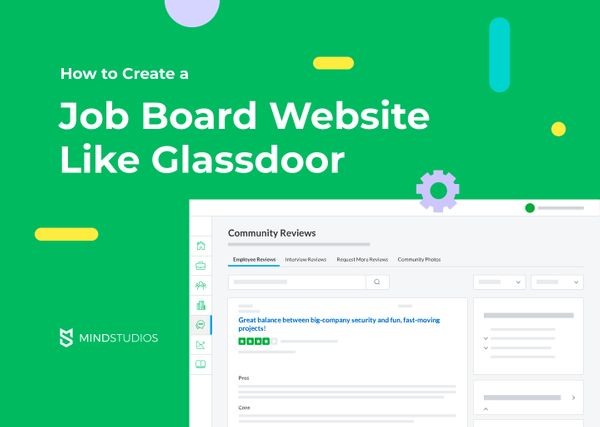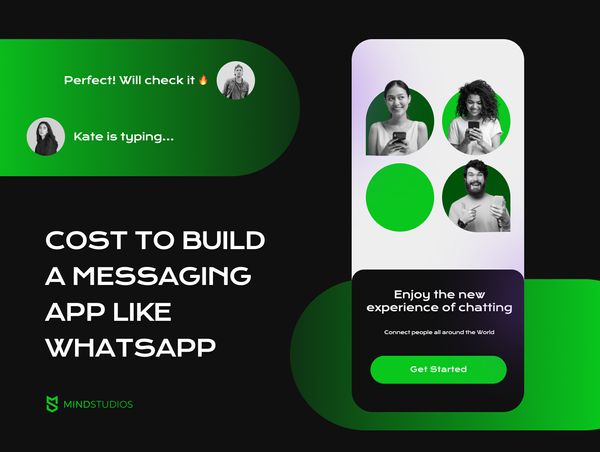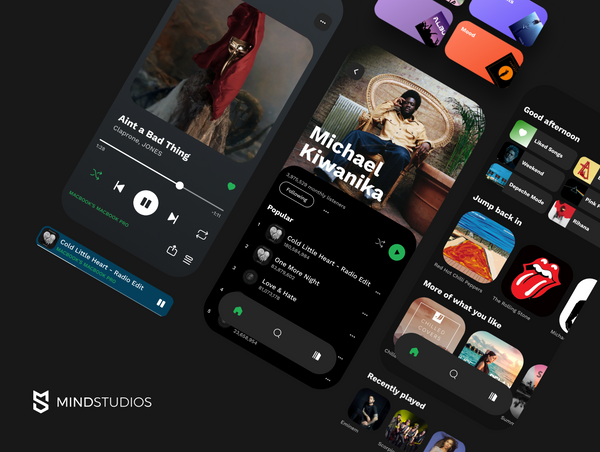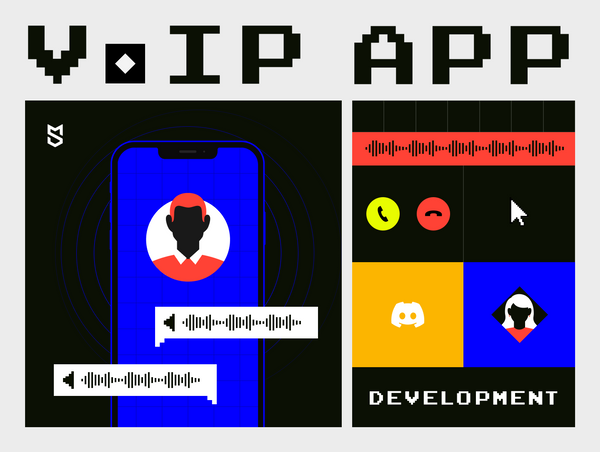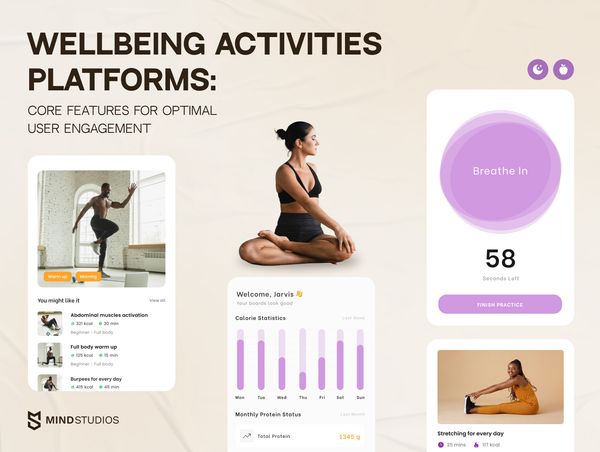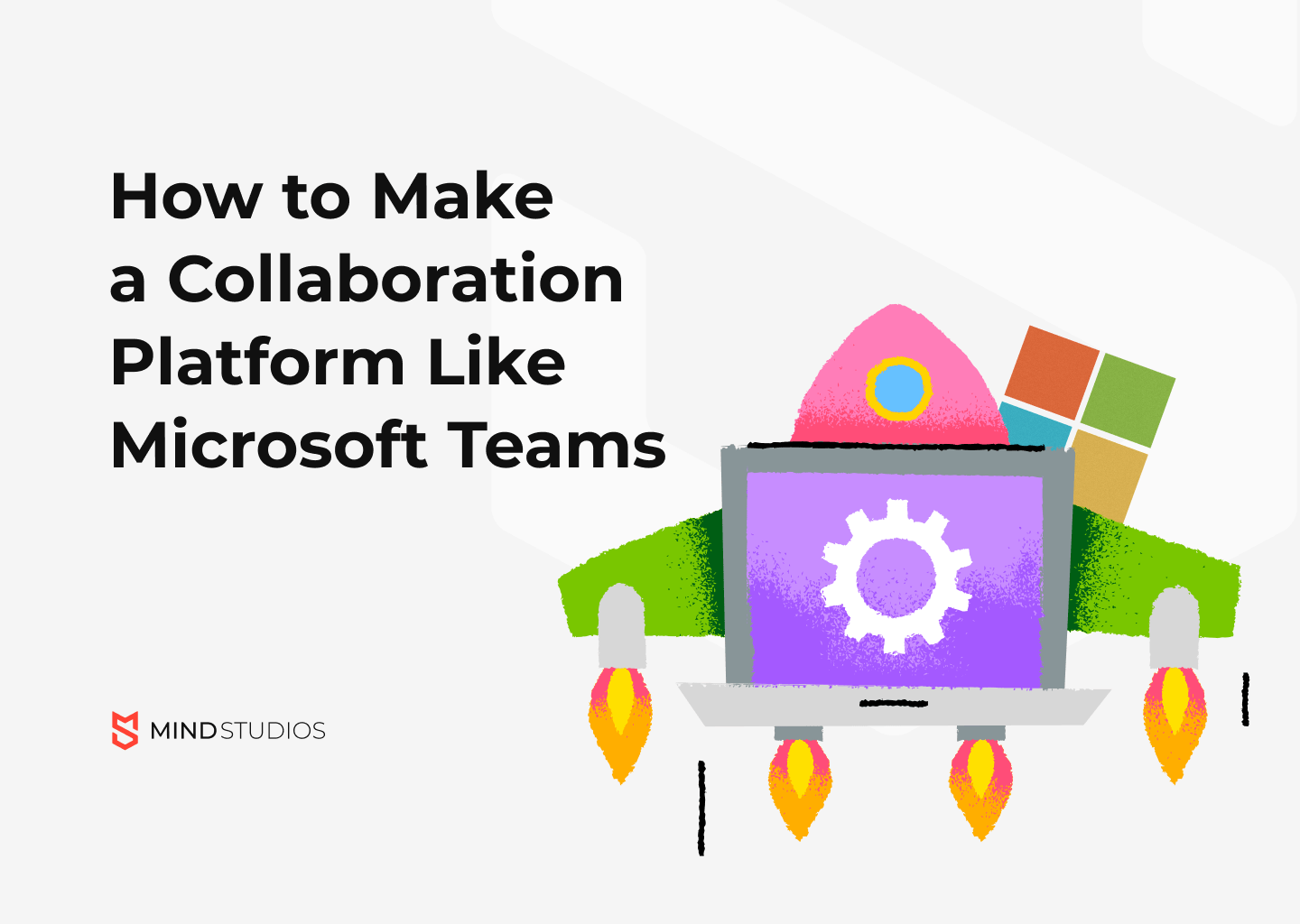
Quality software is more integral for work now than ever. Here, we’ll talk about how to make a collaboration platform, the cost of building this kind of software, and how you can approach the process.
How do collaboration tools for business differ from communication platforms?
Remote work has been increasing in popularity for years, but 2020 has given us all a kick up the backside so hard we’re gonna have whiplash for years. The demand for all kinds of software to manage remote teams has risen in the past couple of months more than in the whole of 2019. Servers are under so much load they’re starting to fail.
In all honesty, we need more enterprise communication software for times like this and beyond.
Enterprise communication software is the collective name for a range of tools including collaboration tools.
Communication platforms like Facebook Workplace are basically social networks. They support the many facets of work-related communication. This means communication about extracurricular activities, too — sharing interests, organizing after-work get-togethers, and more. Ultimately, Facebook Workplace and similar platforms exist to unify a company’s workforce by bringing people closer to each other and to the company.
Microsoft Teams, Trello, and Slack, on the other hand, are team collaboration tools. They’re less about the corporate spirit and more about actual work. And while helping employees form bonds is extremely important, some companies prefer not doing that with internal software. These companies choose platforms like MS Teams and Slack.
Want to know how to make a collaboration platform like Microsoft Teams? Here’s a general guide.
1. Start with business analysis

Before you start developing your collaboration software, you need to conduct research and analyze the data. The success of your product depends on the quality of your analysis, which is why if you’re not a specialist yourself, it’s sensible to hire one. If you’re planning to outsource development to a software development company, many such companies have project managers and analysts who can do this work for you.
Business analysis is a wide topic in and of itself and a process that requires time and professional skills. You can collect the information you’ll need to build a successful communication and collaboration platform in a template called the Lean Canvas.
The Lean Canvas is a collection of questions the answers to which will help you make your product as good as it can be — and then better:
- What’s the problem your product is trying to solve?
- How will your product solve the problem?
- What’s unique about your product?
- Who are your competitors?
- Is there any advantage you can use that your competitors can’t?
- For whom are you building your product?
- How do you plan to measure your product’s performance?
- How can you promote your product?
- How do you plan to earn revenue?
Usually, it’s the project manager’s responsibility to collect and organize all this and some additional information. This information will allow you to make your first rough estimates of the time and cost for development. These estimates will be very approximate and will change at least once — when you and the team decide on the features you need — but probably more than once, since new ideas can pop up anytime, features come and go, and new technology is introduced often. However, it’s a start.
2. Decide what kind of online collaboration tools you want to build
Even within the collaboration tools market, there are different types of platforms.
-
Microsoft Teams is a recent collaboration tool included in Microsoft 365. Its greatest advantage is seamless integration with all other Microsoft tools, including Skype for Business.
-
Slack is, first and foremost, a messenger app. It’s a great tool for team collaboration as it allows you to create channels and subchannels, threads, and drafts, stores files, and can connect to a wide range of other tools you might already be using.
-
Trello and Asana are project management tools where a team leader can add tasks, assign them to team members, and move them between boards (e.g. To Do — In Progress — Completed). These platforms have no in-app chat, but users can leave comments on tasks. Both offer integration with Slack for communication.
You need to know what type of collaboration software you’re going to make before you begin development, since different types will have different features.
3. Create a navigation concept
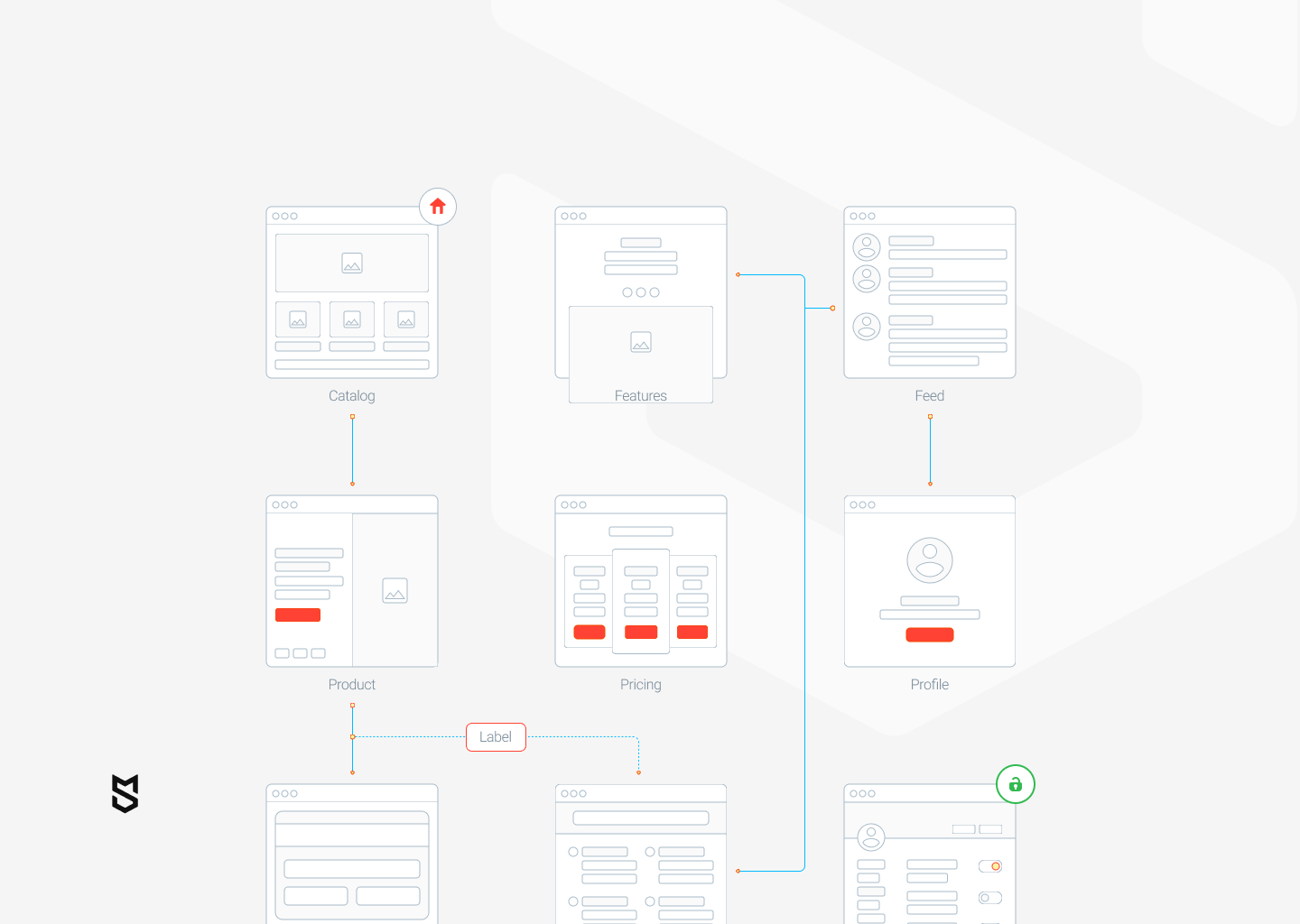
A navigation concept is a sketch of your platform created by UI/UX designers. It’s not yet a design — there are no color schemes, icons, or fonts. A sketch is a set of screens, as complete as possible, built to create a visualization of the platform. What button leads where? How are the elements placed? What goes after what? How is everything connected? A navigation concept helps you and the team get on the same page and see the product similarly.
4. Build prototypes
Before you go and dump all your money into the full-scale product, you need to validate the idea. Armed with the information you’ve collected, you can test whether the idea itself is viable and whether someone actually needs your product. You can validate ideas via surveys or make use of medium-fidelity prototypes.
This type of prototype has more distinctive visualization than a navigation concept and is designed to show your test group of users what the software will be able to do and how. You can use the data obtained from feedback to make adjustments to the product.
After you’ve validated your idea, you can create a UX strategy. This is the last pre-development stage. A UX strategy includes a detailed interface and high-fidelity prototypes. These prototypes aren’t yet a complete design — they’re often black-and-white and have generalized fonts and buttons — but they provide a thorough understanding of what’s located where and how everything connects.
5. Choose a monetization model
If you’re building a Slack or Trello clone for your own internal use, you don’t need to monetize it. However, companies rarely build this kind of software just for themselves. Our guess is that if you’ve been looking up how to make an online collaboration website or app, it’s to offer it as a service for other businesses.
When it comes to apps for work, monetization models are fairly standard. Using ads is strongly discouraged, as they’ll distract people from their tasks. One-time payments may be used but are generally not advised. The most used options for earning ROI from collaboration and communication tools are:
- Subscription model
- Freemium model
The subscription model entails monthly or yearly payments, usually with a trial period. The freemium model is when you offer a basic set of features free of charge and extra features for a fee. The fee for freemium apps can be one-time or subscription-based.
6. Build an MVP/MLP
Today, the market is oversaturated with just about everything, including collaboration tools for business. It’s important to launch your collaboration tool as soon as possible to start gathering additional data and making early revenue. That’s what an MVP, or minimum viable product, is for. It’s a platform with basic functionality that’s launched between a landing page and a full product.
However, there’s an alternative — an MLP, or minimum lovable product. The difference is that an MLP places a strong focus on the interface design and usability, not only functionality. By making your product lovable, you help it stand out from the competition.
7. Monitor the metrics
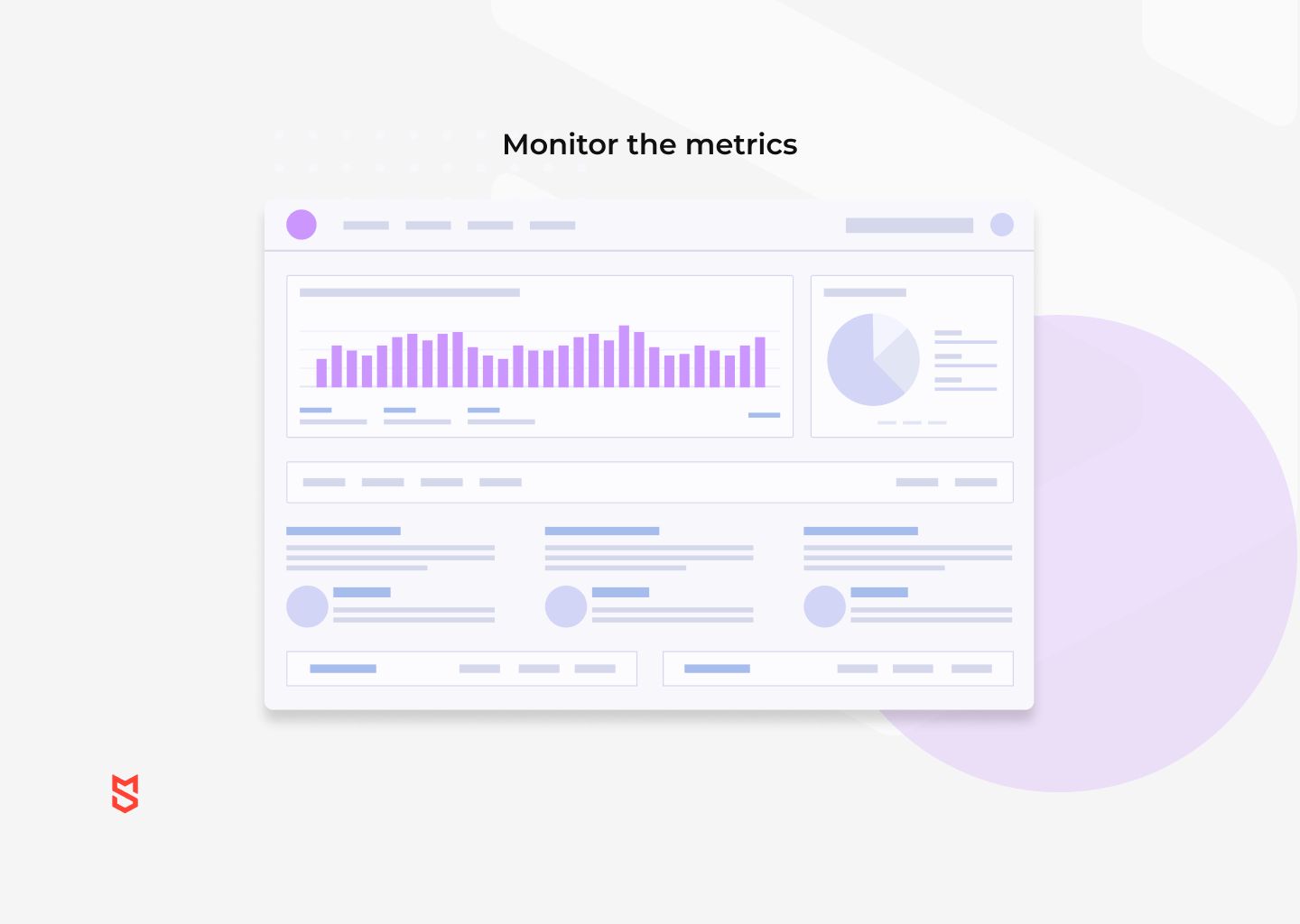
After launching an MVP or MLP, it’s important to monitor its performance. By continuously monitoring comments and the metrics you’ve decided on during business analysis, you’ll know what’s good about your product and what needs more work. This will also help you prioritize the next features to launch.
Collaboration platform development: must-have features
Depending on what kind of collaboration tool you’re building, the features will differ. We’ll try to cover the most important features across different apps to create a fuller picture.
Chat
Apps like Trello and Asana don’t have this feature, as we’ve mentioned, and that’s actually one of the main complaints users have about these platforms. Chat functionality inside a collaboration platform is essential when it comes to business. Simple and easy communication elevates performance.
For smoother communication, users should be able to hold private one-on-one conversations as well as group chats. For example, Slack has #channels — chats dedicated to separate topics or projects that people can join and leave as necessary. Discord has a similar system.
Search
Users must be able to search for a message in a chat or for a task on a board. This goes without saying, right? Sometimes users need to find messages going back months, and sometimes there might be a thousand messages per day in a chat. Search is a must for work communication and collaboration.
Voice and video calls
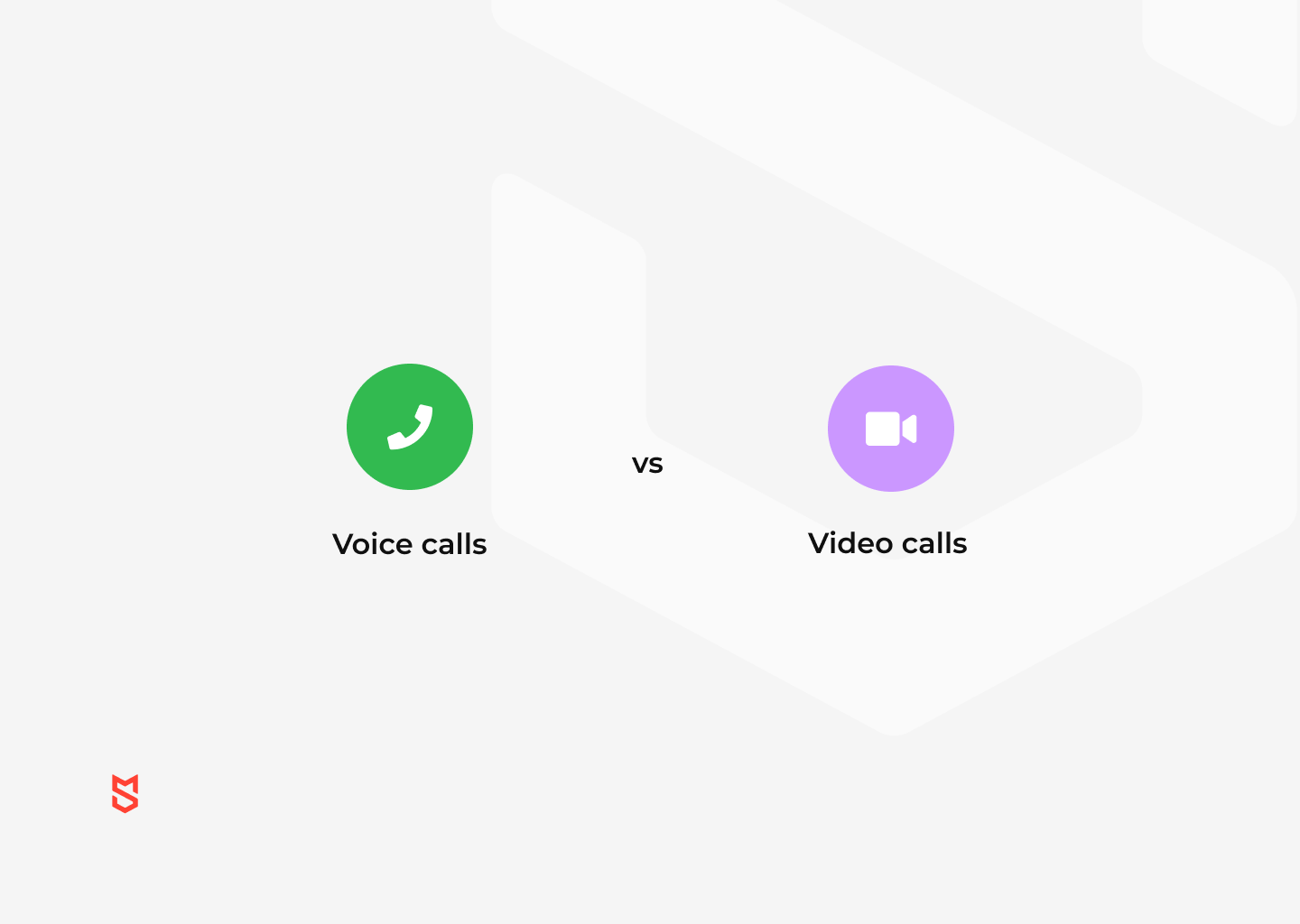
It’s widely known that people think faster and communicate more effectively out loud than in writing. That’s why many companies have daily or weekly meetings to discuss the issues they face. This is common in software development, for example — teams working on the same project meet to discuss problems and find solutions by throwing out the wildest ideas.
When we write, we tend to overthink each word so we don’t say anything stupid. However, in problem-solving, a solution that seems weird or silly might actually be something that will push the team in the right direction. That’s why if you want to develop an app like Slack or Microsoft Teams, you’ll need a calling feature.
File sharing
Not every kind of work includes exchanging files, and with services like Google Docs and Google Sheets, it can be enough to share a link in a message. However, the option to drop a file right into the chat window is valuable for most users. It’s just faster sometimes.
Shared storage
Microsoft Teams allows for collaboration in documents and provides a shared drive for storage. Slack has Files and Saved tabs where users can easily access everything that’s not plain text in messages. Whether your app should just provide access to files or the possibility to jointly edit documents without leaving the app will depend on the type of teams that will use your communication and collaboration platform.
Screen sharing
Screen sharing is really valuable for remote collaboration. Mostly, it’s part of a video calling feature. Sharing screens enables team members to support what they’re saying with visuals. In video conferencing, it’s possible to share screens when making reports and presentations. In negotiations and online meetings with clients or partners, users can share diagrams and charts to support a statement. Screen sharing will come in handy if you’re pitching a project to investors or reporting project progress.
Assigning / @mentions
Assigning and mentioning features can be implemented in a similar way, which is why we’ve put them together here.
- If you want to develop a project management tool like Trello, you’ll need to implement a feature to assign tasks to team members.
- In Google Docs, it’s possible to invite a person to check out a document by @mentioning them in a comment.
- For a Slack-like messenger, mentioning a user in a group chat draws their attention and, given added functionality, can be used to easily find messages targeted at them.
Organizational chart
If you’re building software for large teams or organizations, think about adding an organizational chart. This will help new employees know who they’re talking to or find people they need to talk to about certain issues. For example, as an IT writer, I sometimes need help from iOS, Android, backend, and frontend developers. I can use an org chart to look up who’s available from the department I need and hit them up with mentions or direct messages.
Admin moderation
When it comes to business collaboration, there needs to be some control over who joins what groups. A permissions system can be implemented to allow company management and team leaders to add or remove members, pin messages, and more. The simplest version of this feature is, like with most messengers, adding one admin and several moderators. Another option is setting up several admins for the whole company account and a moderator for each group chat. This will make monitoring communication easier as it will be done by a team of people instead of one person or whoever wants to.
Notifications
When developing collaboration tools for business, remember that users can’t afford to miss messages. Notification options are a must in any communication tool, but in a work-oriented one, it’s one of the most important features.
If you’re building a mobile app, use push notifications. If you’re developing a collaborative website, use pop-up notifications, highlighted unread message counters in a side menu, or a browser extension.
Integrations

Most companies today work with various software tools and are reluctant to switch to something completely different.
The biggest perk of Slack is arguably its 800+ integrations. Slack users can integrate external document editors into Slack. Instead of an internal calendar, there are integrations with Google Calendar and Outlook Calendar. Slack can be connected to Trello, Microsoft 365, Google Drive, Jira, and many, many more services.
Trello can be powered up with Google Drive, Dropbox, Slack, Jira, and others.
Microsoft Teams also has a number of integrations, though not as many as Slack. On the other hand, Teams is software for Microsoft 365 users, meaning it comes with a number of native apps businesses have been using for years, so maybe it doesn’t need as many integrations.
Depending on your idea and budget, it might be more convenient to use integrations instead of developing certain features from scratch.
Security
Business means money and sensitive commercial and personal data. Protecting your business communication and collaboration platform from hackers is essential. When working with an outsourcing company, discuss what protection your team can implement. Your platform needs to be protected from all known vulnerabilities. Messages and files need to be encrypted and you should use multi-factor authentication.
Strong backend
Servers are the cornerstone of collaboration and communication tools for business. Messages and files need to be stored for a long time, accessed quickly, synced via the cloud between devices, and thoroughly protected.
Cost to make a collaboration platform
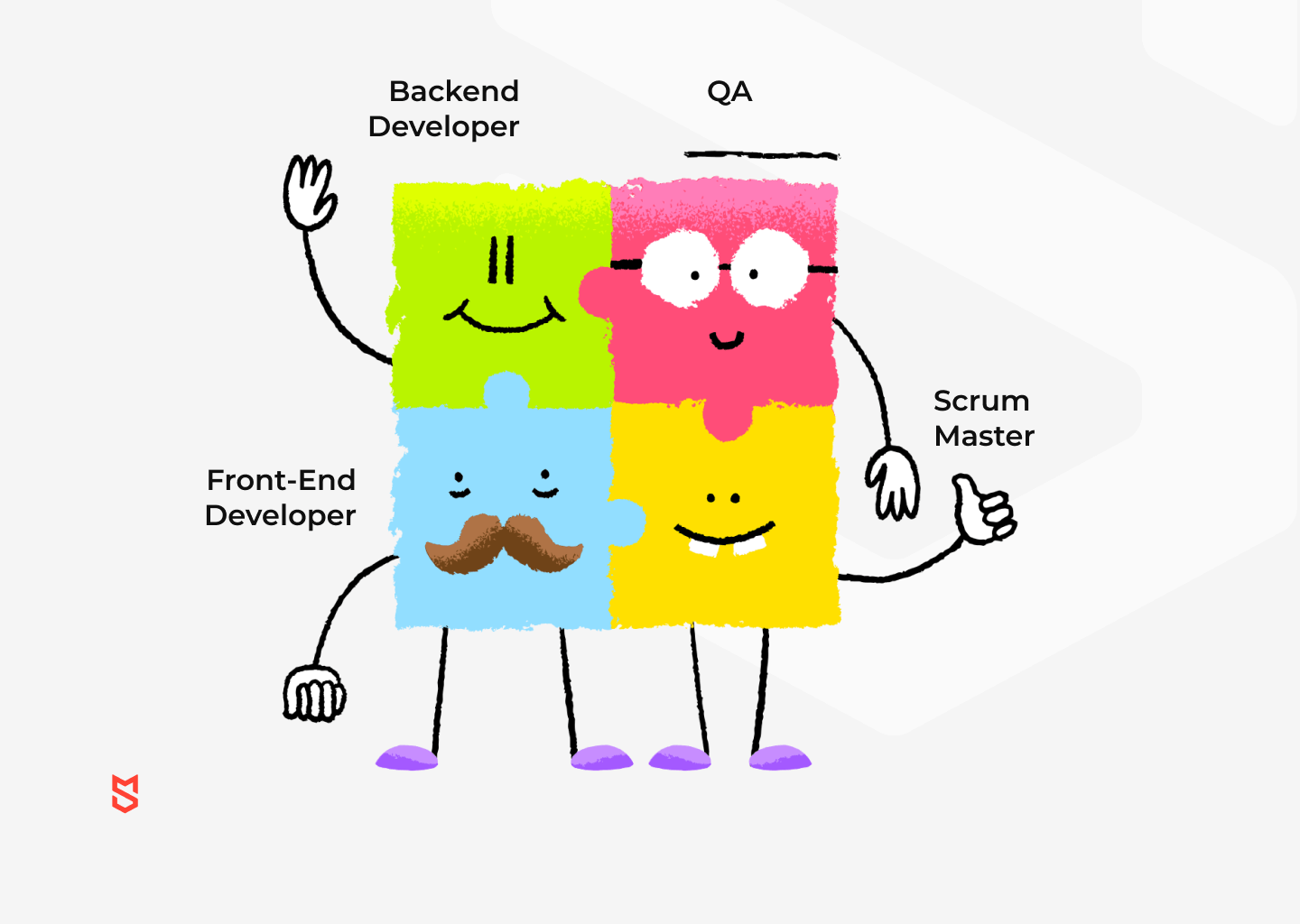
If you’re building a Microsoft Teams-like app, you’ll probably want to start with a web app or desktop app first and then build a mobile app later. A service like Slack, on the other hand, could be a mobile app first and then a web app. However, since you’re building an app for work — both remote and in the office — chances are you’ll actually need both a mobile and a web application. But you don’t need to make them simultaneously, of course. Conduct research and survey your target audience to determine which platform is the most important for your users.
Here’s a lineup of specialists you’ll need for a web app:
- 1 project manager
- 1 web designer
- 1 frontend developer
- 1-2 backend developer
- 1-2 quality assurance specialist
For a mobile app, the team will look like this:
- 1 project manager
- 1 UI/UX designer
- 1 mobile developer for each platform (iOS and Android)
- 1-2 backend developer
- 1 quality assurance specialist
If you go for both a web app and a mobile app, you won’t need two project managers; one will be enough. The same goes for backend developers and QAs, as the same server can be used for mobile and web applications, and QAs can test both web and mobile apps. However, testing for several platforms will take more time, so you might want to hire another QA to be able to launch your app faster. Usually, it takes the longest to test Android apps.
The cost to make only a collaboration website will be the lowest, at about $71,000, and launching a website usually takes the least amount of time: expect something around two to four months.
The cost to make a collaboration app like Microsoft Teams for one mobile platform will be higher than the cost to make a web app — around $80,600 and five months to a year of development depending on the complexity and number of features.
According to research by Buffer in 2019, remote work is here to stay — even when the world recovers from the pandemic. People are quickly getting used to its perks. So now is the time to invest in collaboration software.
Have more questions? If you have any questions or would like a consultation and a quote, drop us a line and we’ll get back to you.


